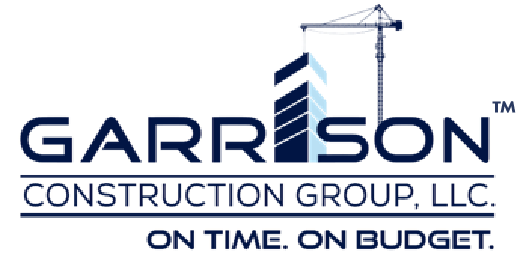Experts Predict COVID-19 Impacts on Office Interior Design
Experts Weigh-in on How COVID-19 May Impact Office Interior Design - Opinions from Colliers International, Gensler & Others
Introduction
The news - and commercial construction industry news - is inundated with updates and predictions regarding COVID-19. As a commercial construction general contractor, the impact of COVID-19 on corporate interior design is on our radar as a top priority.
We’ve culled thorough articles from industry leaders like Colliers International, Gensler and others, and in this post we share just the highlights with you. We hope you find this summary useful.
If you require support in modifying or re-designing your office spaces as your team heads back to the office in a COVID-19 environment, the Garrison Construction Group team is here to help.
Just the Highlights
Following find a brief overview of major themes regarding COVID-19 office design echoed across articles published by Gensler, Colliers International, the BBC and Work Design Magazine.
Short-Term Design Solutions
In uncertain times and as our understanding of COVID-19 develops, property managers and tenants are looking for quick-to-implement and cost effective solutions to create a safer environment and to engender a sense of wellbeing as employees head back to the office.
Here we focus on office design, not to detract from the importance of other related protocols like temperature checks, upgraded cleaning regimens, staff work-from-home rotations, etc.
Design Standouts Include:
De-densification of workstations
Installing “sneeze guard” barriers
Creating more “private offices”
Reconfiguring group meeting spaces
Re-designing communal spaces - lobby, break room, etc
Incorporating anti-microbial materials / treatments
HVAC upgrades & protocols to improve indoor air quality
Hands-free tech to open doors, operate elevators, etc
Installing sink / hand washing areas adjacent to entrances / lobbies and requesting “hand-washing upon entry.”
Taking queues from healthcare design to apply to corporate interiors.
Material Choice & Coatings
In the COVID-19 environment, material choice matters even more. Anti-microbial surfaces harbor and transmit far fewer organisms than a non-treated surfaces, therefore reducing the spread of infection.
Following find some of the material standouts, primarily from an article published by Work Design Magazine and a BBC interview with Brent Capron, an NYC based interior design director experienced in healthcare / hospital design.
Featured Materials Include:
Materials that can withstand heavy cleaning with caustic products, Ex: use stone or laminates and avoid porous surfaces, like wood.
Solution-dyed carpets with moisture-barrier backing to withstand heavy shampooing.
Silver & Copper - and other treatments with anti-microbial properties. Silver/ Copper specific uses include:
Surfaces made of steel or aluminum like faucets and door handles can have silver or copper applied to the finished product as a protective coating.
Plastic or silicone surfaces like plastic countertops and light switches can incorporate silver or copper
Upholstered Surfaces - Silver / Copper can be woven into fabrics used to upholster high-touch surfaces.
Indoor Air Quality
Nearly every article we reviewed highlighted the importance of air quality and implementing measures to help filter bacteria and viruses from indoor environments.
Measures & Retrofits to Existing Buildings Included:
Air Filtration & HVAC upgrades / retrofits
Ultra-Violet (UV) light - ex: adding UV lights to HVAC air handlers / inside ductwork or other UV filtration protocols.
Incorporating outdoor / fresh air - ex: operable windows, outdoor work spaces, HVAC systems that cycle-in outdoor air to dilute / refresh indoor air, etc.
Air pressurization / anterooms with negative air pressure, sometimes combined with UV to kill bacteria, to prevent cross-contamination - common in healthcare design.
Biophilic design elements (nature) - ex: plants indoors
Hands-Free Technologies & “Contactless” Offices
Technologies that minimize or eliminate the need for employees to touch “communal” surfaces were predicted to become more common.
Examples included:
Voice-and-motion activated technologies:
Automatic doors
Motion-sensing lights
Restrooms with motion sensing toilets, sinks, soap / paper-towel dispensers and hands-free ways to open stall doors, ex: foot pulls
Conference rooms with voice-activated tech to control lighting, audio-visuals, etc.
Smartphone apps that control: elevators, coffee machines, etc
Technology to support “paperless” offices
Rethinking office kitchens - replaced with automation or a dedicated server
MORE INFORMATION & SOURCES
Garrison Construction Group is one of the largest commercial general contracting firms in Houston, Texas. To receive industry trend summaries, like this post, and for updates regarding our latest projects, follow us on LinkedIn.
To view the original, source articles, please see below.
Colliers International - Post COVID-19: Office Design and Market | By Colin Scarlett, Executive Vice President of Colliers International
Gensler - How Should Office Buildings Change in a Post-Pandemic World? | By Ben Tranel, regional leader in Gensler’s Office Buildings–Developer practice
Work Design Magazine - Rethinking Workplace Design In The Wake Of COVID-19 | by Megan Hart, a NCIDQ certified, LEED accredited Interior Designer experienced in Healthcare and Corporate Interior Design
The BBC - How offices will change after coronavirus | By Jessica Mudditt, citing Brent Capron, AIA - Principal, Interior Design Director at Perkins & Will in New York
The opinions expressed by Garrison Construction Group, LLC in this post do not necessarily reflect the opinions of Colliers International, Gensler, Work Design Magazine, the BBC, Brent Capron, or any other source cited within this post.
